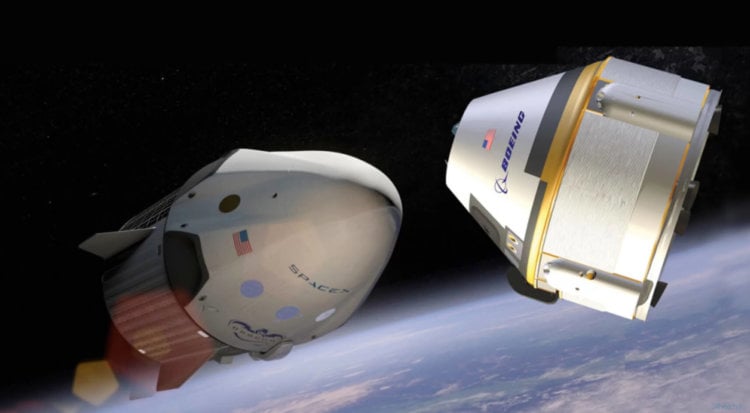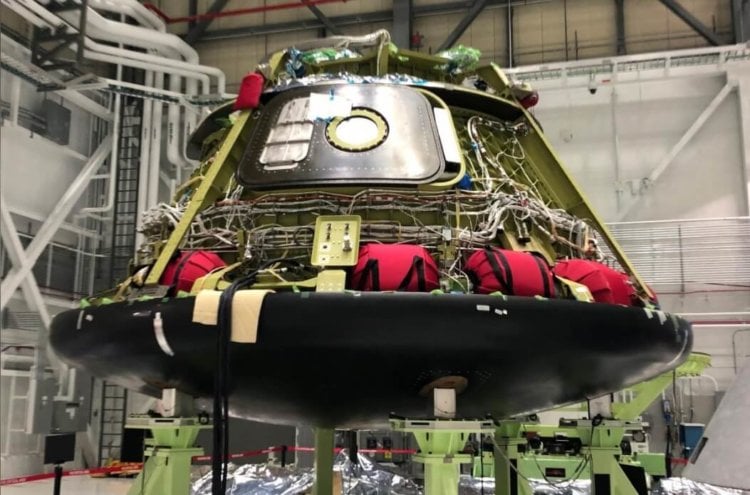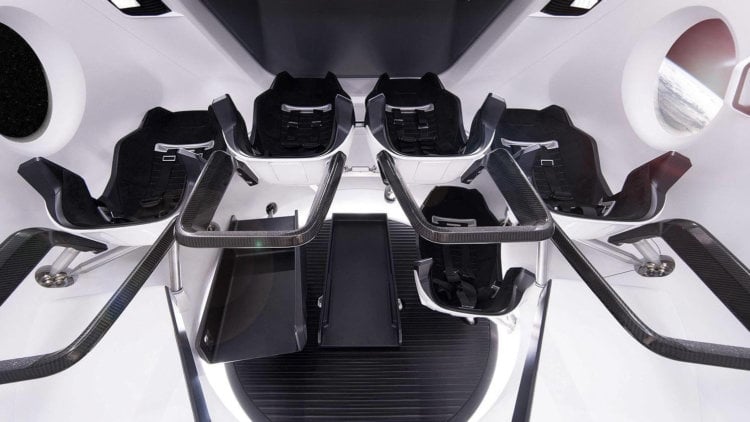Space Agency NASA has warned private companies SpaceX and Boeing about the availability of some design flaws in the manned spacecraft Crew Dragon and CST-100 Cockpit developed by these contractors, Reuters reported, citing industry sources and a new government report of the expert Commission of the space Agency. The detected problems can threaten the U.S. manned program, the beginning of the revival of which is expected this year.

The state Agency NASA has signed contracts with private aerospace companies SpaceX and Boeing (amount of contract: 2.6 and $ 4.2 billion respectively) for the development of launch vehicles and manned spacecraft, with which the United States wants to send its astronauts to the International space station alone for the first time since 2011, when he closed the space Shuttle program.
Just before the scheduled for March 2, the first demonstration (without crew) the launch of manned version of Dragon spacecraft of SpaceX Advisory group on security NASA has released his annual report, which reported on four “key issues” associated with spacecraft of both companies. As noted in the report, these issues put in jeopardy the schedule for the manned flights.
The report says about the structural vulnerability of the spacecraft, Boeing with the Department head of the thermal cone. As for SpaceX, doubt cause serious modifications of the apparatus Crew Dragon after the explosion of the Falcon 9 rocket on the launch pad in 2016 as a result of a defect in the fuel system of the rocket. Issues also caused a method of preparing the rocket for launch: it is assumed that filling of the Falcon 9 rocket will be already on Board of the spacecraft crew. “The effectiveness of the parachute landing system,” both devices also caused the Commission a number of questions.
“Given the announced schedules of launches for SpaceX and Boeing is a very serious problem,” the report says.
Two sources close to the matter told Reuters news Agency that the list of issues is not limited to these four points. In fact, more problems – in the case of both private space companies decisions require about 30-35 technical problems. Journalists failed to clarify what exactly is the problem, but sources said that before the start of the first manned space flight companies will have to decide “most of them”.
According to sources, in collaboration with SpaceX and Boeing as a result of strict certification process, which involved a thorough analysis of the data and the various tests, a database of the risks NASA is constantly updated. Private companies have repeatedly delayed the launch of its manned space systems, which is to be expected when talking about multi-billion dollar contracts to develop spacecraft capable of delivering humans to orbit.

One of the spaceships, the Boeing CST-100 Cockpit, located in the production facility at Cape Canaveral in Florida
At the request of journalists to comment on the situation around technical issues associated with the development of systems of Boeing and SpaceX a NASA spokesman Joshua Finch clear answer is not given, citing confidentiality, but said that “security for the Agency has always stood above any timetables.”
The Boeing representative Josh Barrett said that the company is “closed” all risk structural vulnerability of his spaceship, when he successfully finished the program to test the device in January. Although with all the difficulties still failed, “all uneasiest changes do not have any major architectural changes”.
“Our reports show that the security of our vehicle exceeds the stated safety requirements of NASA,” said Barrett.
The representative of SpaceX, James Gleason, in turn, without false modesty, said that thanks to cooperation with NASA, the company has developed “one of the safest and most technologically advanced manned spacecraft in history.”
“SpaceX is nothing more important than the safety of the crew,” commented Gleason, adding that the main long-term goal of the company is striving to provide people the opportunity to fly in space.
Based Executive Director of Tesla Elon Musk SpaceX company with the introduction of technology reusable carriers could reduce the cost of space launches. Boeing, in turn, deals with issues of space since the 60-ies and is the world’s largest aircraft manufacturer. The technical base is enormous. But time passes, and the company has not yet provided ready-to-use manned spacecraft, so the US has to pay Russia about $ 80 million for each seat aboard the Russian system “the Union” to deliver their astronauts to the ISS.
NASA for several years tends to refuse services of the Russian side. That is why the Agency has signed contracts with Boeing and SpaceX to develop a manned spacecraft. It was expected that the first manned private spacecraft will take place this year. If the ships are not ready by the end of 2019, NASA risks losing access to the ISS. Anticipating this situation, the Agency decided to book two more seats for its astronauts on Soyuz. First flight in the autumn of 2019, the second in the spring of 2020. In any case, the original purpose will not solve it if the ships Boeing and SpaceX to be ready.

The interior of the spacecraft Crew Dragon SpaceX
This Friday, the Agency planned to inspect the readiness of the device company SpaceX Dragon, to be sure that the ship will be ready for the scheduled test run on March 2.
Disadvantages of the parachute system
Three sources close to the subject told Reuters the publisher that NASA has identified some design differences between the earlier version of the spacecraft company SpaceX Dragon, designed to deliver cargo to the International space station and the new version of the device that you want to use to send humans into orbit.
As it turned out, a matter of the design of the parachute system. Dome the last of the manned version of the vehicle is significantly more than unmanned. Because of this, there is a risk of non-disclosure in the course of the descent apparatus back into the atmosphere at supersonic speeds. In addition, the opening time of parachutes and their interaction also caused the Agency some concern about their effectiveness. In other words, NASA is not yet sure that the parachute system Crew Dragon will be capable of effectively and safely for the crew to slow down the device during the descent.
According to Gleason, SpaceX under the commercial manned program has completed 17 inspections of the parachute system. Additional 10 tests planned before the start of the second demonstration mission Crew Dragon. In addition, the company representative added that parachute system is designed to supply effectiveness, so the spacecraft and the crew it can be safely planted even in the case if you refuse one of the parachutes.
However, in the same report of the expert Committee on the safety of NASA indicates that SpaceX may have to recycle the current design of the parachute system. This, in turn, likely to lead to the need for more checks and tests that ultimately will result in weeks or even months of delays in the launch.
In addition, NASA has discovered some problems with the system that helps the spacecraft SpaceX correctly oriented in space when landing on the water, which increases the risk of sucking in excessive volumes of water. This information was confirmed by two industry sources, and later by the Agency.
Gleason, in turn, assures that the outer shell of the spacecraft Crew Dragon is completely waterproof, and the unit itself has excellent buoyancy. Finding inside the ship after the splashdown will be completely safe for the crew, adds a representative of the company SpaceX.
The risk of further postponements of the launch
Previously, NASA has announced that the first demonstration mission of the Dragon spacecraft Crew no crew has been moved from 23 February to 2 March. The launch of the second demonstration mission, in which on the ship people will fly, should happen in July of this year. The Agency attributed the delay to the desire of the contractor to conduct additional tests of all vehicle systems.
As for the spacecraft’s Cockpit from the Boeing company, the demonstration run without a crew should have been held no earlier than April of this year. The manned launch was scheduled for August. According to the report of the expert Commission, this schedule also likely have to change, postponed time of the spins at a later time.
According to the representative of the Boeing company Josh Barrett, one of the problems connected with bad from engine test system abort start-up, during which test bench has poured rocket fuel. The incident occurred due to defective valves in the fuel supply, the design of which has now been redesigned. Barrett notes that the new valves will require new tests and inspections.
What do you think, will SpaceX and Boeing to solve all problems to their scheduled run, or do we expect another delay? Please share your opinion in our Telegram chat.